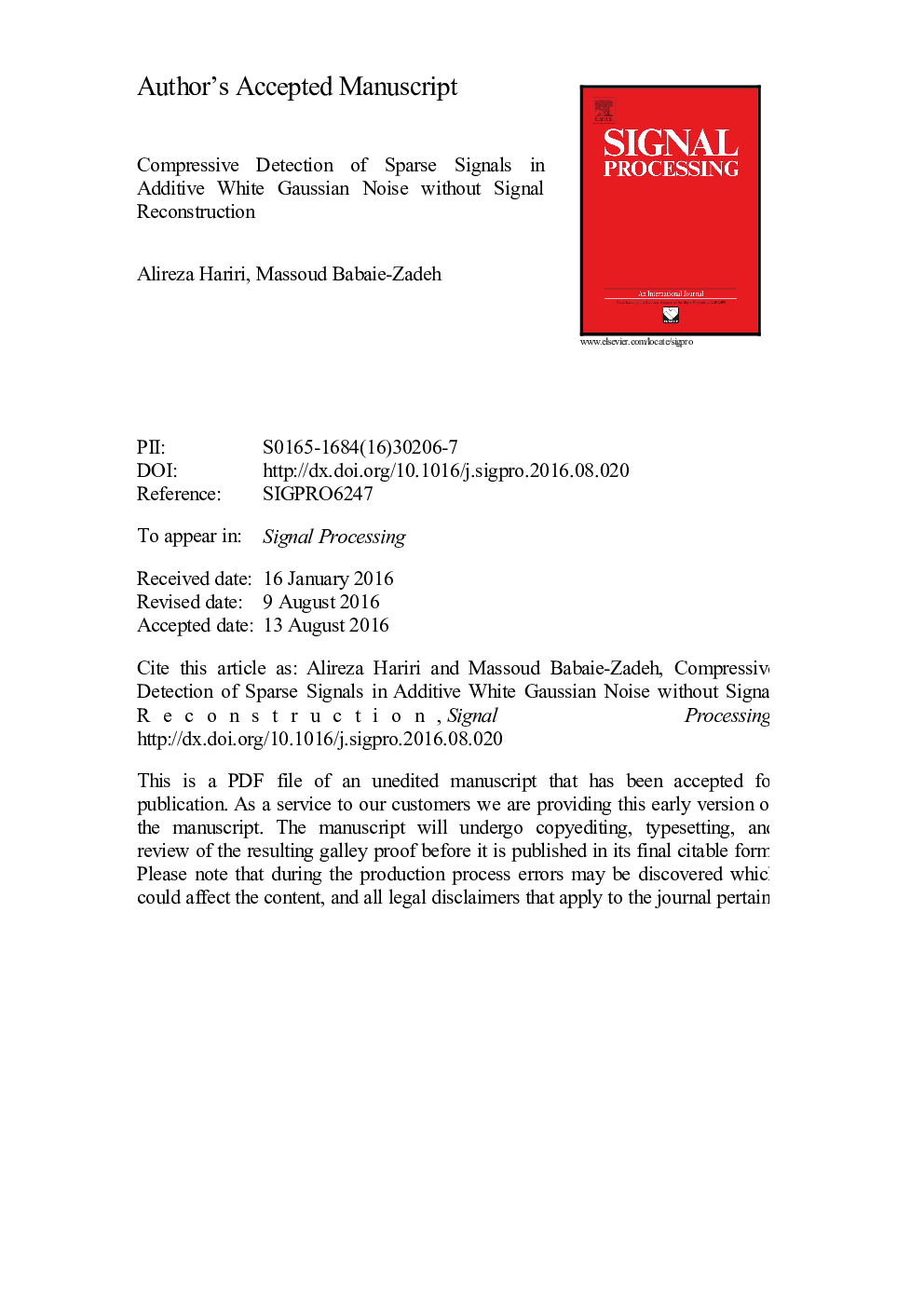| Article ID | Journal | Published Year | Pages | File Type |
|---|---|---|---|---|
| 6958078 | Signal Processing | 2017 | 31 Pages |
Abstract
The main motivation behind compressive sensing is to reduce the sampling rate at the input of a digital signal processing system. However, if for processing the sensed signal one requires to reconstruct the corresponding Nyquist samples, then the data rate will be again high in the processing stages of the overall system. Therefore, it is preferred that the desired processing task is done directly on the compressive measurements, without the need for the reconstruction of the Nyquist samples. This paper addresses the case in which the processing task is “detection” (the existence) of a sparse signal in additive white Gaussian noise, with applications e.g. in radar systems. Moreover, we will propose two estimators for estimating the degree of sparsity of the detected signal. We will show that one of the estimators attains the Cramér-Rao lower bound of the problem.
Related Topics
Physical Sciences and Engineering
Computer Science
Signal Processing
Authors
Alireza Hariri, Massoud Babaie-Zadeh,
